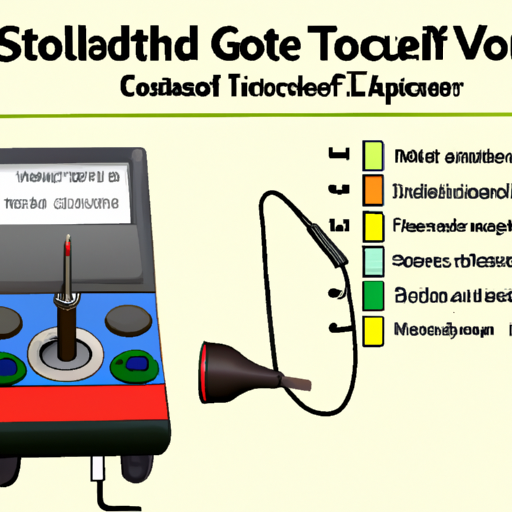We may earn money or products from the companies that may be mentioned in this post.
If you’re an avid golfer and own a golf cart, it’s essential to know how to troubleshoot and fix any issues that may arise. One common problem that golf cart owners encounter is a faulty solenoid. But don’t worry, in this step-by-step guide, we’ll show you how to test your golf cart solenoid using a multimeter. With just a few simple steps, you’ll be able to determine if your solenoid is working properly and get back on the course in no time. So let’s get started and ensure your golf cart is running smoothly!
A Step-by-Step Guide to Testing a Golf Cart Solenoid with a Multimeter

Step 1: Gather the Necessary Supplies
Before you begin testing your golf cart solenoid, it’s important to gather all the necessary supplies. You will need a multimeter, safety glasses, and gloves. These supplies are essential for ensuring your safety while working with the solenoid.
Step 2: Ensure Safety
Safety should always be a top priority when working with any electrical components. To ensure your safety, make sure to wear safety glasses to protect your eyes from any possible debris or sparks. Additionally, it’s important to put on gloves to protect your hands from any potential harm. Lastly, be sure to disconnect the golf cart battery before proceeding with the testing process.
Step 3: Locate the Solenoid
To effectively test the golf cart solenoid, you will first need to locate its position. Consulting the golf cart manual is the best way to determine the exact location of the solenoid. The manual will provide detailed instructions and diagrams to help you identify where the solenoid is located within your golf cart.

Step 4: Set the Multimeter
Now that you have located the solenoid, it’s time to set up your multimeter for testing. To do this, turn on the multimeter and ensure that it is in the correct mode for measuring resistance. This mode is usually represented by an Omega symbol. Next, choose an appropriate range on the multimeter to ensure accurate readings during the testing process.
Step 5: Test the Control Circuit
The control circuit of the solenoid is what allows it to activate and deactivate. To test this circuit, first, identify the control terminal on the solenoid. It is usually marked as “S” or “SW.” Once you have located the control terminal, touch one probe of the multimeter to it. Next, touch the other probe to the solenoid housing. This test will help determine if there is continuity in the control circuit.
Step 6: Check for Continuity
The continuity of the solenoid is crucial for its proper functioning. To check for continuity, connect the multimeter probes to the two large terminals on the solenoid. Once the connection is made, check the multimeter reading. If the multimeter shows infinite resistance, it indicates that the solenoid is faulty and needs to be replaced.
Step 7: Measure the Coil Resistance
The coil resistance is an essential parameter to test in a golf cart solenoid. To measure its resistance, first, identify the two small terminals on the solenoid. Once located, connect the multimeter probes to these terminals. The multimeter will then display the resistance value of the solenoid’s coil. This reading will help determine if the coil is functioning properly.
Step 8: Verify Voltage Control
Another important aspect to test in the golf cart solenoid is its voltage control. To do this, connect the multimeter probes across the two large terminals of the solenoid. With the golf cart key turned to the “on” position, check if the multimeter shows continuity or low resistance. If there is continuity, it indicates that the solenoid is receiving the required voltage for proper operation.
Step 9: Inspect Wiring Connections
Sometimes, faulty connections can lead to solenoid malfunctions. Therefore, it is crucial to inspect the wiring connections of the solenoid. Take a close look at the connections and check for any loose or corroded terminals. If you find any loose connections, tighten them appropriately. If you notice any corrosion, clean the terminals using a suitable electrical contact cleaner.
Step 10: Reassemble and Test
Once you have completed all the necessary tests and made any required repairs or adjustments, it’s time to reassemble everything and test the solenoid’s operation. Begin by reconnecting the golf cart battery to restore power. Then, turn on the ignition and engage the golf cart’s forward or reverse function. This will allow you to observe if the solenoid is functioning properly. If everything is working as expected, you can be confident that your golf cart solenoid is in good condition.
In conclusion, testing a golf cart solenoid with a multimeter is a straightforward process that ensures the proper functioning of your golf cart. By following these step-by-step instructions, you will be able to identify any issues with the solenoid and take appropriate measures to address them. Remember to always prioritize safety and consult the golf cart manual for specific instructions regarding your particular model. Happy testing!
